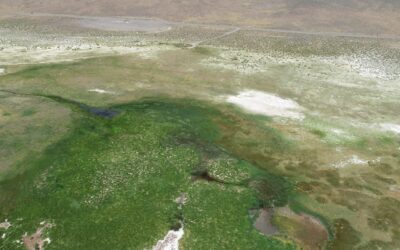DRI Ice Core Lab Data Shows Magnitude of Historic Fire Activity in Southern Hemisphere
May 28, 2021
RENO, NEV.
Ice Cores
Fire Activity
Climate Change
Above: Smoke from human-caused wildfires on the Patagonian steppe are trapped in Antarctic ice.
Credit: Kathy Kasic/Brett Kuxhausen, Montana State University.
A new study in Science Advances features ice core data from the DRI Ice Core Laboratory and research by Nathan Chellman, Ph.D., Monica Arienzo, Ph.D., and Joe McConnell, Ph.D.
Fire emissions in the Southern Hemisphere may have been much higher during pre-industrial times than in the present day, according to new research from an international team of scientists including Nathan Chellman, Ph.D., Monica Arienzo, Ph.D., and Joe McConnell, Ph.D., of the Desert Research Institute (DRI) in Reno.
The study, published today in Science Advances, used new ice core data from DRI’s Ice Core Laboratory to document changes in levels of soot from ancient fires and modern fossil fuel combustion during the years 1750 to 2000. Many of the 14 Antarctic ice cores included in the study were obtained through national and international collaborations, and together comprise an unprecedented long-term record of Southern Hemisphere fire activity that provided the foundation for the modeling effort described in the new paper.
All of the ice cores were analyzed using a specialized method for soot measurements in ice that McConnell and his team pioneered at DRI nearly 15 years ago. This method is now widely used in laboratories around the world.
For more information about the DRI Ice Core Laboratory, please visit: https://www-dev.dri.edu/labs/trace-chemistry-laboratory/. The full news release from Harvard University, A fiery past sheds new light on the future of global climate change, is posted below.
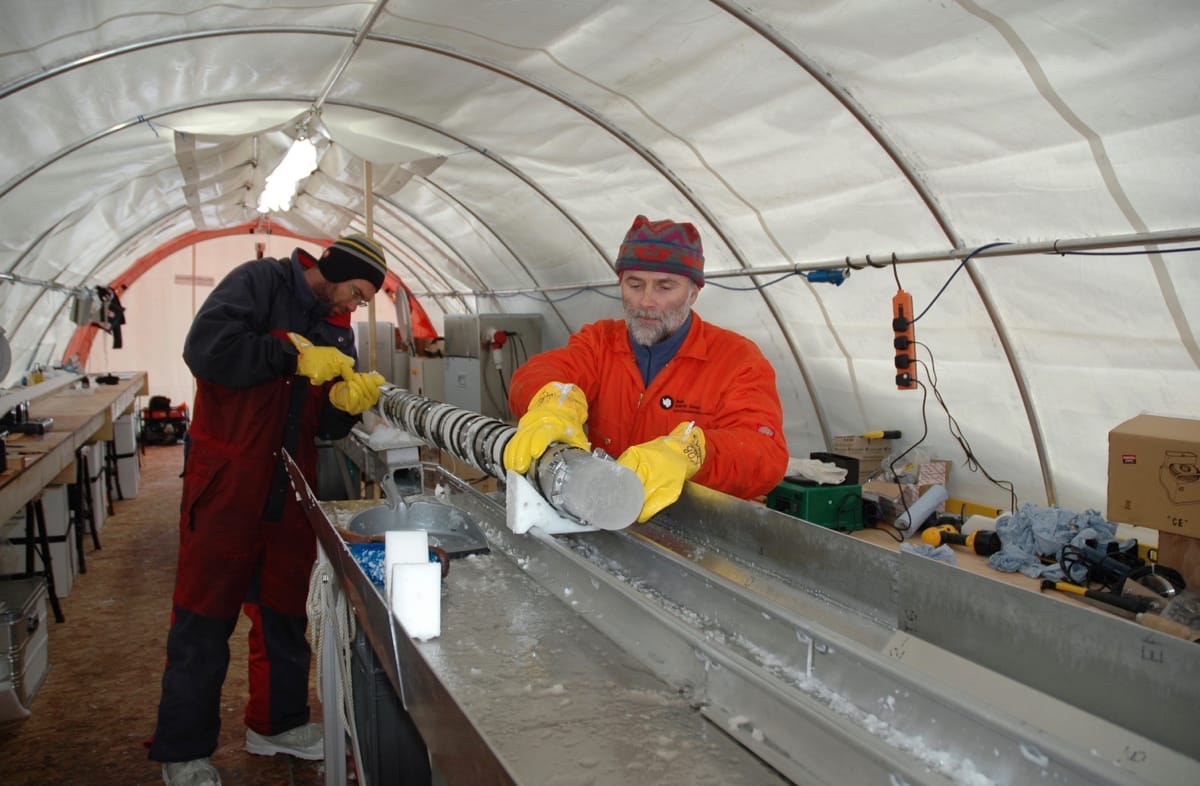
Co-author Dr. Robert Mulvaney from the British Antarctic Arctic Survey drilling the James Ross Island core in the Antarctic Peninsula.
Credit: Robert Mulvaney.
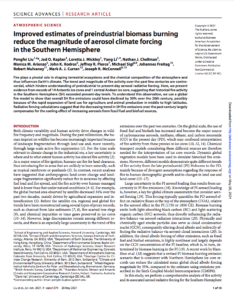
The full text of the paper, Improved estimates of preindustrial biomass burning reduce the magnitude of aerosol climate forcing in the Southern Hemisphere, is available from Science Advances: https://advances.sciencemag.org/content/7/22/eabc1379.abstract
A fiery past sheds new light on the future of global climate change
Ice core samples reveal significant smoke aerosols in the pre-industrial Southern Hemisphere
By Leah Burrows, Harvard University
Centuries-old smoke particles preserved in the ice reveal a fiery past in the Southern Hemisphere and shed new light on the future impacts of global climate change, according to new research published in Science Advances.
“Up till now, the magnitude of past fire activity, and thus the amount of smoke in the preindustrial atmosphere, has not been well characterized,” said Pengfei Liu, a former graduate student and postdoctoral fellow at the Harvard John A. Paulson School of Engineering and Applied Sciences (SEAS) and first author of the paper. “These results have importance for understanding the evolution of climate change from the 1750s until today, and for predicting future climate.”
One of the biggest uncertainties when it comes to predicting the future impacts of climate change is how fast surface temperatures will rise in response to increases in greenhouse gases. Predicting these temperatures is complicated since it involves the calculation of competing warming and cooling effects in the atmosphere. Greenhouse gases trap heat and warm the planet’s surface while aerosol particles in the atmosphere from volcanoes, fires and other combustion cool the planet by blocking sunlight or seeding cloud cover. Understanding how sensitive surface temperature is to each of these effects and how they interact is critical to predicting the future impact of climate change.
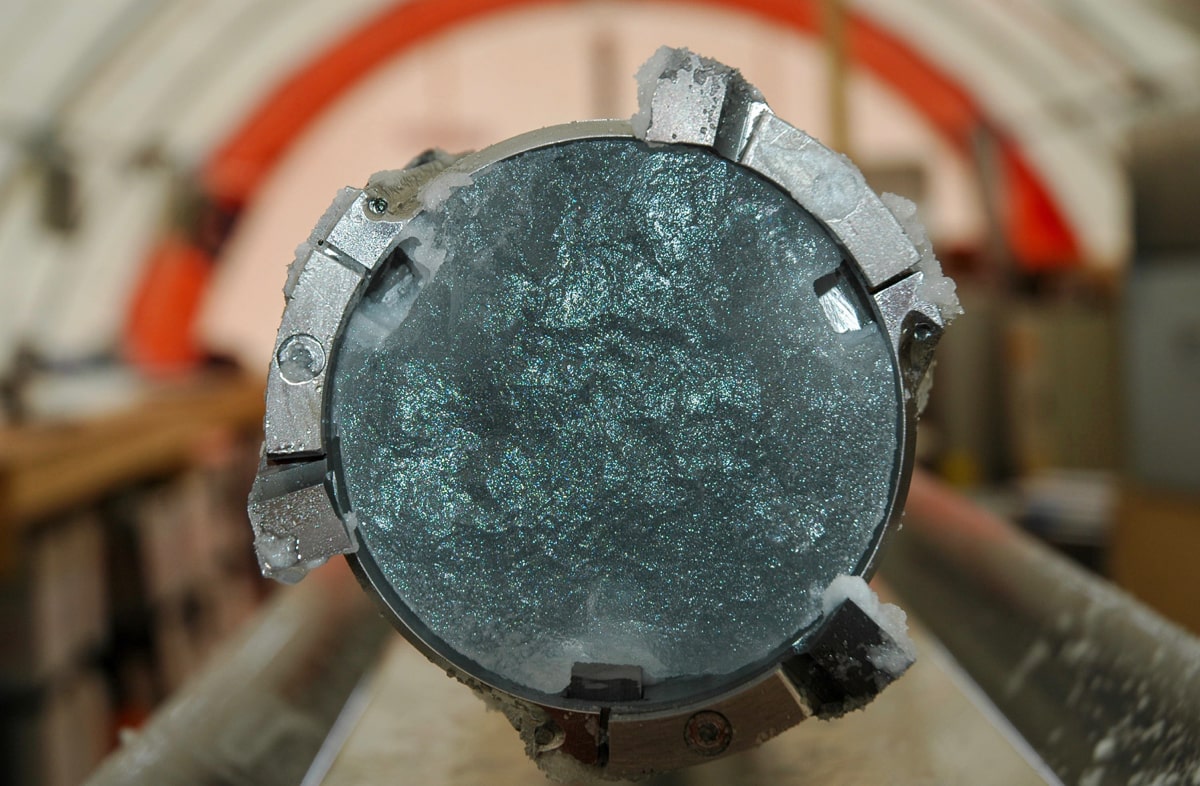
Ancient ice from James Ross Island in the Northern Antarctic Peninsula about to be extracted from the drill barrel.
Credit: Robert Mulvaney.
Many of today’s climate models rely on past levels of greenhouse gasses and aerosols to validate their predictions for the future. But there’s a problem: While pre-industrial levels of greenhouse gasses are well documented, the amount of smoke aerosols in the preindustrial atmosphere is not.
To model smoke in the pre-industrial Southern Hemisphere, the research team looked to Antarctica, where the ice trapped smoke particles emitted from fires in Australia, Africa and South America. Ice core scientists and co-authors of the study, Joseph McConnell and Nathan Chellman from the Desert Research Institute in Nevada, measured soot, a key component of smoke, deposited in an array of 14 ice cores from across the continent, many provided by international collaborators.
“Soot deposited in glacier ice directly reflects past atmospheric concentrations so well-dated ice cores provide the most reliable long-term records,” said McConnell.
What they found was unexpected.
“While most studies have assumed less fire took place in the preindustrial era, the ice cores suggested a much fierier past, at least in the Southern Hemisphere,” said Loretta Mickley, Senior Research Fellow in Chemistry-Climate Interactions at SEAS and senior author of the paper.
To account for these levels of smoke, the researchers ran computer simulations that account for both wildfires and the burning practices of indigenous people.
“The computer simulations of fire show that the atmosphere of the Southern Hemisphere could have been very smoky in the century before the Industrial Revolution. Soot concentrations in the atmosphere were up to four times greater than previous studies suggested. Most of this was caused by widespread and regular burning practiced by indigenous peoples in the pre-colonial period,” said Jed Kaplan, Associate Professor at the University of Hong Kong and co-author of the study.
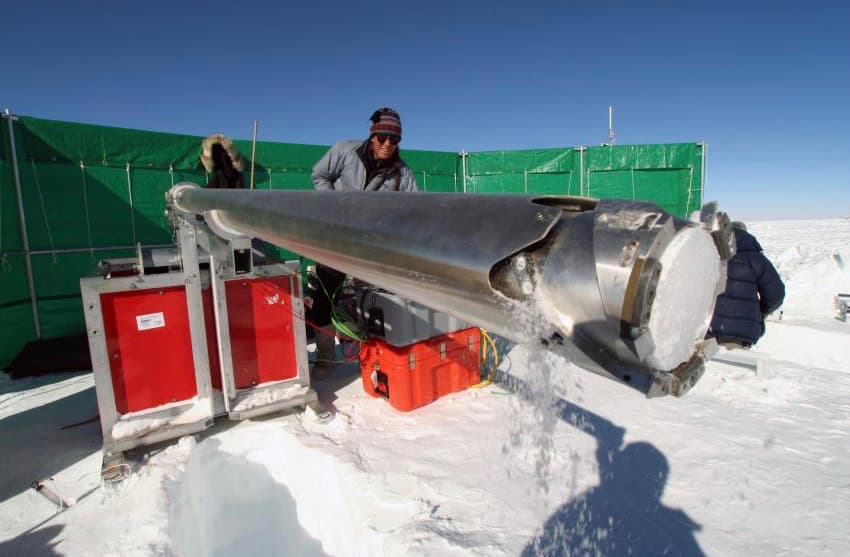
Drilling ice cores in East Antarctica as part of the Norwegian-U.S. International IPY Scientific Traverse of East Antarctica.
Credit: Mary Albert.
This result agrees with the ice core records that also show that soot was abundant before the start of the industrial era and has remained relatively constant through the 20th century. The modeling suggests that as land-use changes decreased fire activity, emissions from industry increased.
What does this finding mean for future surface temperatures?
By underestimating the cooling effect of smoke particles in the pre-industrial world, climate models might have overestimated the warming effect of carbon dioxide and other greenhouse gasses in order to account for the observed increases in surface temperatures.
“Climate scientists have known that the most recent generation of climate models have been over-estimating surface temperature sensitivity to greenhouse gasses, but we haven’t known why or by how much,” said Liu. “This research offers a possible explanation.”
“Clearly the world is warming but the key question is how fast will it warm as greenhouse gas emissions continue to rise. This research allows us to refine our predictions moving forward,” said Mickley.
The research was co-authored by Yang Li, Monica Arienzo, John Kodros, Jeffrey Pierce, Michael Sigl, Johannes Freitag, Robert Mulvaney, and Mark Curran.
It was funded by the National Science Foundation’s Geosciences Directorate under grants AGS-1702814 and 1702830, with additional support from 0538416, 0538427, and 0839093.
Additional Information:
The full text of the paper, Improved estimates of preindustrial biomass burning reduce the magnitude of aerosol climate forcing in the Southern Hemisphere, is available from Science Advances: https://advances.sciencemag.org/content/7/22/eabc1379.abstract
The news release above was reposted with permission from Harvard University: https://www.seas.harvard.edu/news/2021/05/fiery-past-sheds-new-light-future-global-climate-change.
###
About the Desert Research Institute
The Desert Research Institute (DRI) is a recognized world leader in basic and applied environmental research. Committed to scientific excellence and integrity, DRI faculty, students, and staff have developed scientific knowledge and innovative technologies in research projects around the globe. Since 1959, DRI’s research has advanced scientific knowledge, supported Nevada’s diversifying economy, provided science-based educational opportunities, and informed policymakers, business leaders, and community members. With campuses in Reno and Las Vegas, DRI serves as the non-profit research arm of the Nevada System of Higher Education. For more information, please visit www.dri.edu


